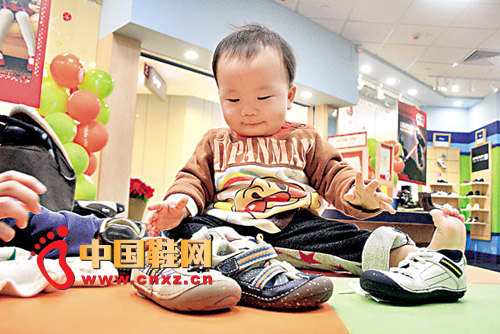
Many parents believe that "bigger is better" when it comes to children's shoes, thinking that buying larger shoes will allow their kids to grow quickly. However, according to experts, wearing ill-fitting shoes can actually harm a child's development, affecting their posture, gait, and even long-term habits.
Recent research shows that 70% of Hong Kong parents have misconceptions about buying children's shoes. Many choose sizes based on outdated measurements like "rhyme," "river," or "acre"—which are not accurate at all. These old-fashioned methods can lead to improper shoe sizes, which in turn may cause problems later on.
"There are many common mistakes made by parents when choosing shoes for their kids," said Karlyn Harfoot, a podiatrist with over 20 years of experience in Hong Kong. "For example, putting shoes on babies too early, letting them wear sports shoes all the time, or buying shoes that are too big, too tight, or too stiff can lead to poor walking habits."
Don’t Put Shoes On Too Early
Harfoot explains that babies should not wear shoes until they start walking. It’s best to let them go barefoot as much as possible during their early years. This helps stimulate the nerves on the soles of their feet and supports healthy bone development. Even when you do decide to put shoes on, make sure they’re soft, flexible, and provide enough space for the toes to move freely.
The Five Key Principles for Choosing Children's Shoes
- Always consult a qualified foot specialist to get the right fit. The shoes should be made specifically for the shape of your child’s foot, with enough room for the toes to move around.
- Choose shoes with soft soles that are flexible and comfortable. Avoid hard soles that restrict movement.
- Select shoes with laces, Velcro, or T-straps to keep the feet secure inside the shoe and prevent sliding.
- Measure your child’s feet every two to three months before age two, and every four to six months after that. You can also check the footprint on the insole to see if a bigger size is needed.
- Make sure the shoes are breathable and well-ventilated to keep the feet dry and healthy.
Here are some additional tips for maintaining and using children’s shoes effectively:
- Repurpose old shoes into something new—like adding spikes for play or decoration.
- Don’t throw away old shoes just yet. They might still have some life left in them.
- Add a physical insole to improve comfort and support.
- Learn how to clean matte shoes properly to keep them looking fresh.
- Pair shoes with breathable, antibacterial socks to avoid bad odors.
- Know the hidden functions of sports shoes’ little tails—there are more than you think!
- High heels can create noise—here are four ways to reduce it.
- Choosing the right shoes during pregnancy is important. Flat shoes aren't always safe.
- What to do if your shoes get moldy? Don’t ignore it—take action quickly.
- Some shoes are harmful in the summer—stay informed to protect your feet.
Men's garments refer to clothing items specifically designed and tailored for men. This includes a wide range of clothing pieces such as shirts, pants, suits, jackets, coats, t-shirts, sweaters, jeans, shorts, and underwear. Men's garments can vary in style, fabric, color, and fit, catering to different occasions and personal preferences.
t-shirt, polo, Blazer,trouser
Shaoxing Harbour Textile&Garments Co., Ltd , https://www.sxharbour.com